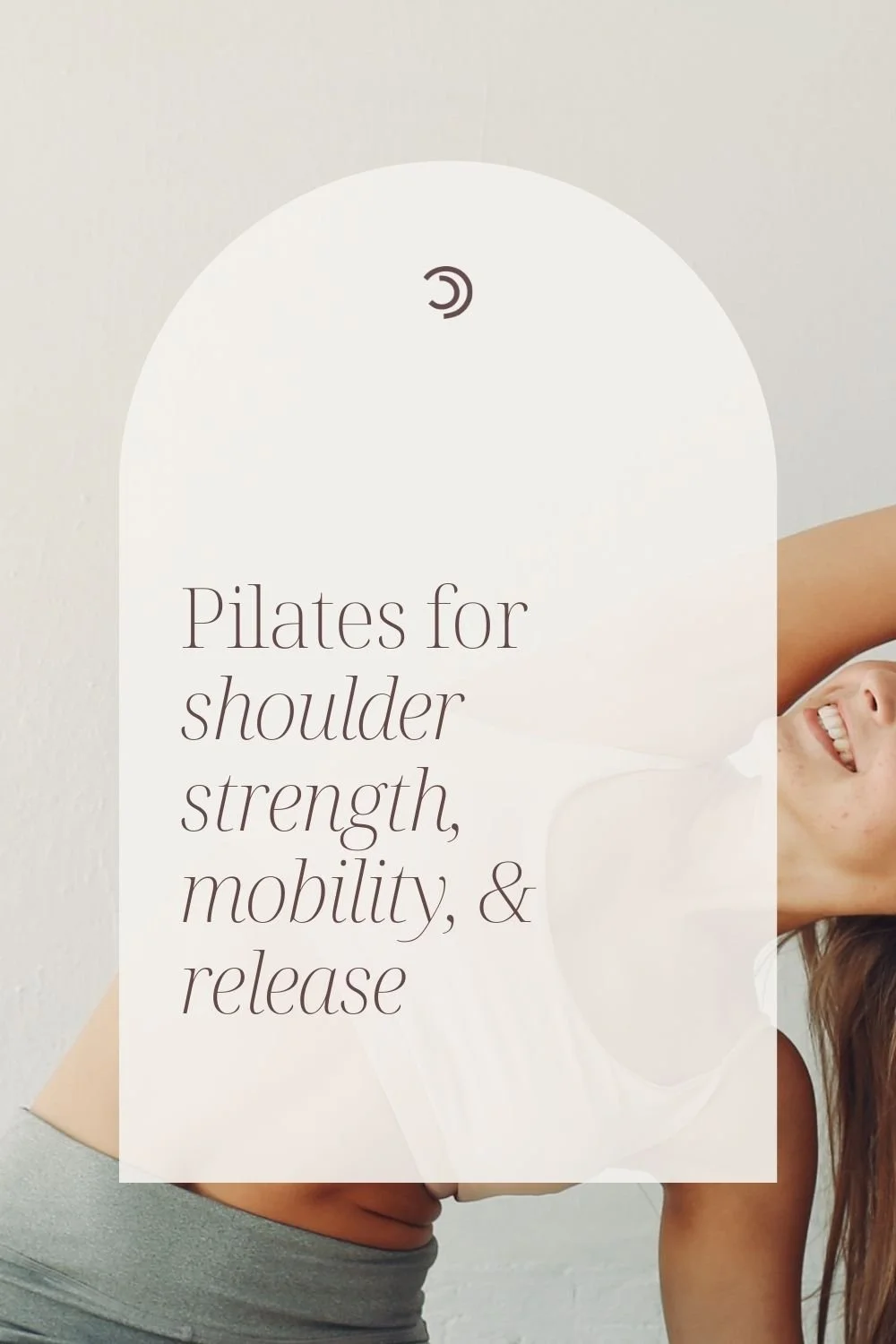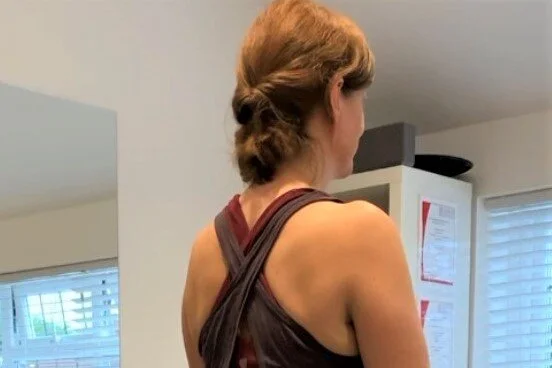Pilates for shoulder strength, mobility, and release
The shoulder joint, otherwise known as the Glenohumeral joint, is arguably the most complicated in the body.
Whilst it’s a ball and socket joint (like the hip), it is also a multiaxial joint – essentially meaning the movement at the joint presents in several different planes of direction.
Considering that the joint brings together the collarbones, (extending from the breastbone at the front), the upper arm bone (the humerus) and the shoulder blades, not to mention a complex tendon and ligament structure, you can see how complex it is.
Image of breastbone and collarbones - Visible Body
Some common shoulder problems
Some common shoulder problems include:
Arthritis (a wearing away of the cartilage between the bones)
Tears or tendinitis (inflammation) in the rotator cuff — the group of tendons that helps you raise and rotate your arm.
Frozen Shoulder
Shoulder pain can also keep you from being able to raise your arms to get dressed, or reach behind you to or reach up to a cupboard or out to a door (Harvard Medical School, 2022).
Our sedentary culture mean that it is rare these days to weight bear through the arms and shoulders but this is so important in terms of being able to strengthen the shoulder and help prevent injuries such as those sustained in falls. Shoulder strength is also key in supporting everyday functional movement.
It’s important therefore to maintain strength in the joint, to maintain congruency, (where the appropriate amount of stiffness in the joint is provided in response to load), but also to maintain mobility in the joint in a range of directions.
The Role of Pilates
Pilates exercises, both mat and equipment, provide mobility, strengthening and stretching of the shoulder joint.
As a Comprehensive Pilates Instructor, one of my first goals is to educate clients about how their shoulder moves. Faulty movement patterns and muscle control can result in neck pain or headaches, for example, and poor postural awareness (the forward head of the desk-based worker or the ubiquitous ‘text neck’) may also contribute to tightness or faulty motor control. (That’s not to say there is such as thing as ‘Perfect Posture’ but that’s for another day).
(Perhaps surprisingly to clients, another key Principle of Pilates, the breath, may also contribute to shoulder pain (particularly in clients who are prone to anxiety).
Our education may start with understanding the mobilisation in the joint and in particular the role of the shoulder blade (Scapular stability).
Shoulder awareness is key in Chair work in the Pilates studio
Something as simple as an arm arc whilst lying on your back is much more than simply waving your arms up and down. The awareness of the shoulder blades and their position on the back of the ribs as we move can help clients move more easily and efficiently. This is true when we work with clients on their fronts (prone) and move into Prone Extension, or the Swan positions, for example.
A good mat class should also progress to perhaps some quadraped work (on all fours) and the challenge of increasing stability and load in the shoulder girdle, whilst challenging core function (e.g ‘Superman’).
This education can also be translated into the studio with the Scapular series on the Chair of on the Trapeze table, and further progressions such as quadraped on the reformer, the Upstretch, or ‘Press up with Handles’ on the Pilates chair’.
Whilst you might not ‘hit the mat’ everyday, you can start with wall press-ups, or press-ups on your kitchen counter to gently start to increase shoulder strength.
In terms of shoulder release, breath work can be a useful starting point. Bringing an awareness to breath and accessing the ‘softening’ of your shoulders on an exhale will start to relieve tension in both the jaw and shoulder. See my blog on ‘Stress and the Breath’ for more information.
Keep moving everyone.
Sarah
Bibliography
Visible Body - The Shoulder Girdle. Available at https://www.visiblebody.com/blog/3d-skeletal-system-the-shoulder-girdle
Polestar Principles - Principles of Movement, Coral Gables, FL
Harvard Medical School - Health Beats. Stretches to keep your shoulders in shape. Available at https://www.health.harvard.edu/staying-healthy/4-stretches-to-keep-your-shoulders-in-shape



